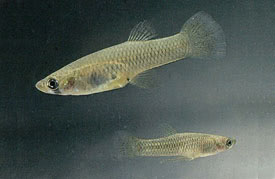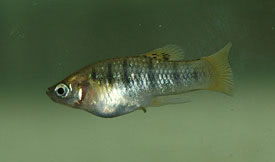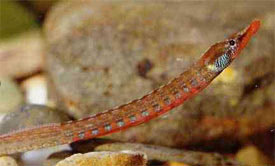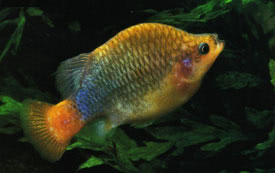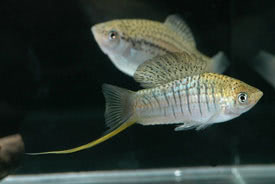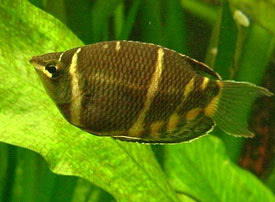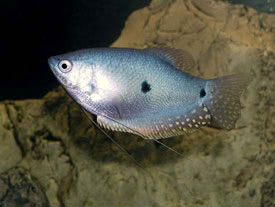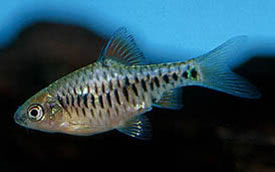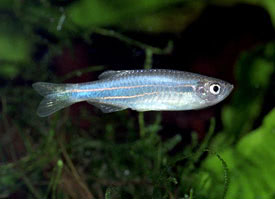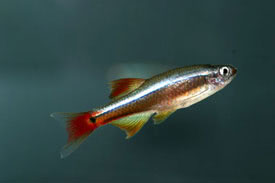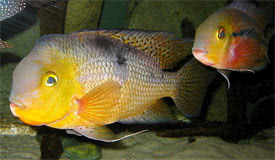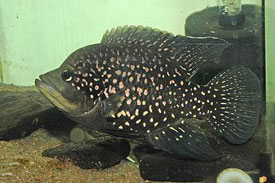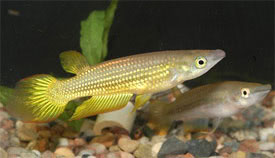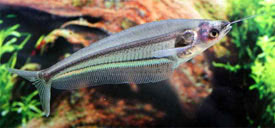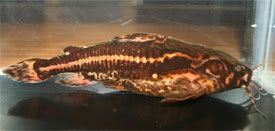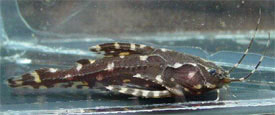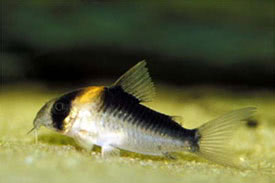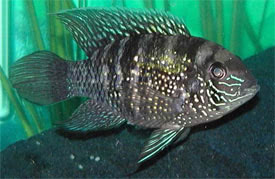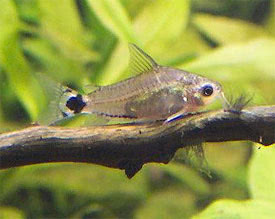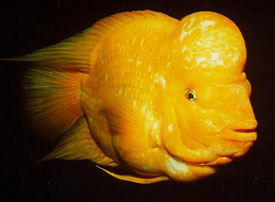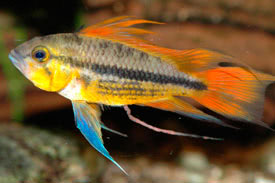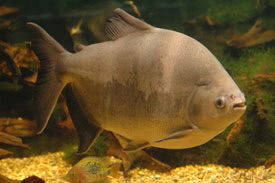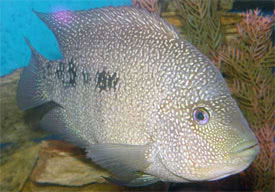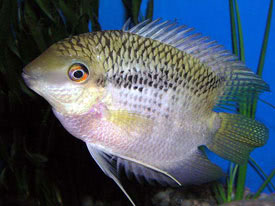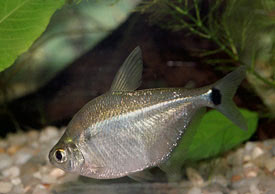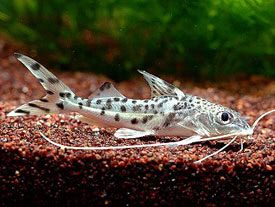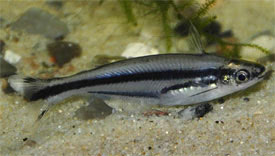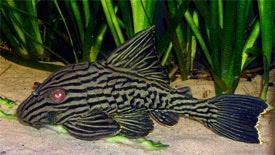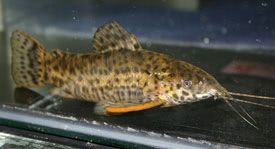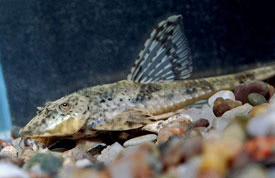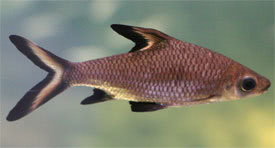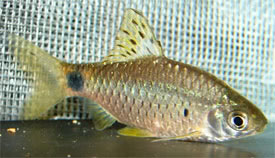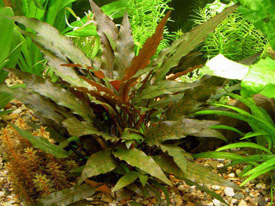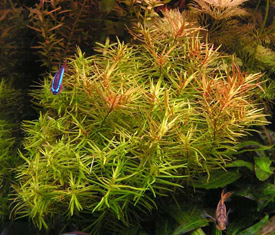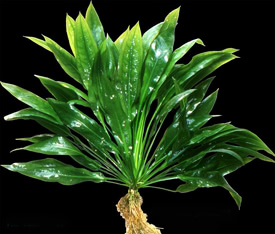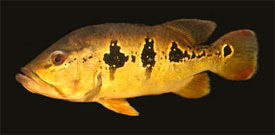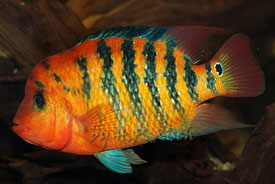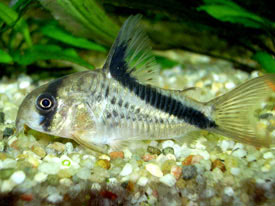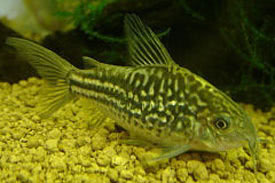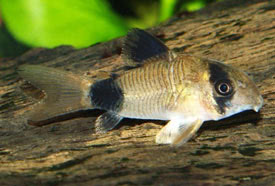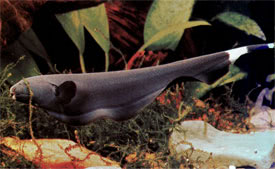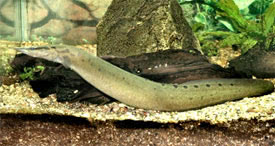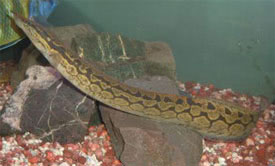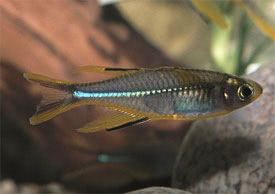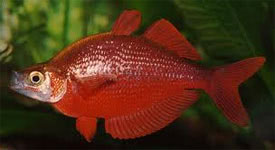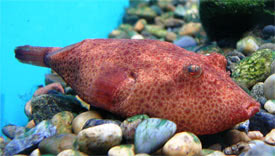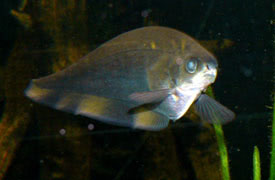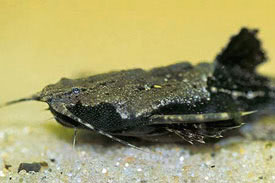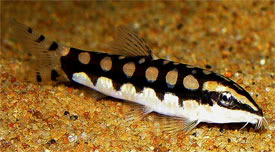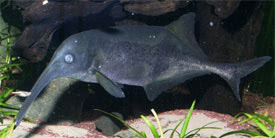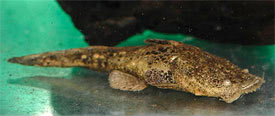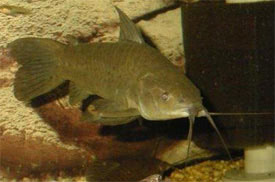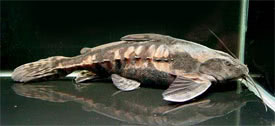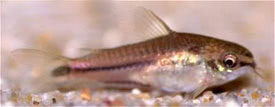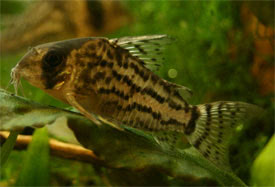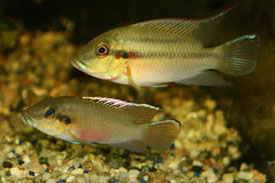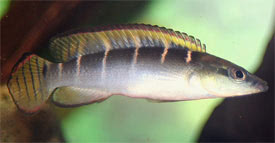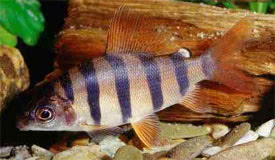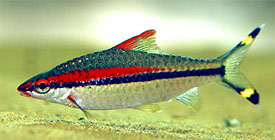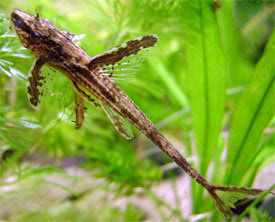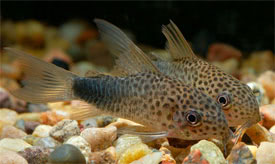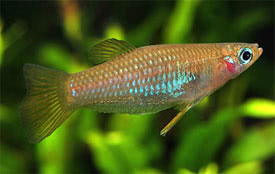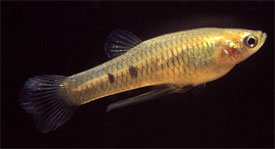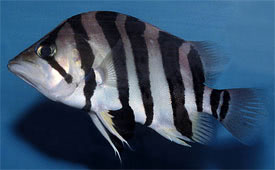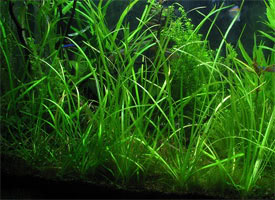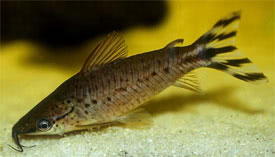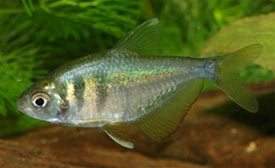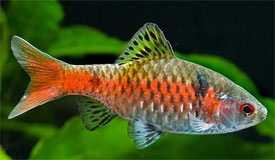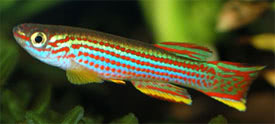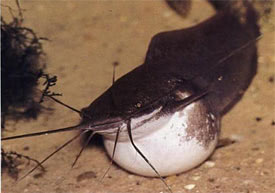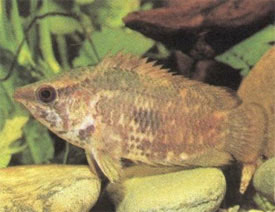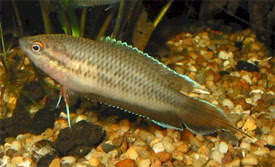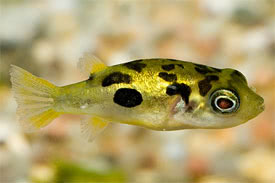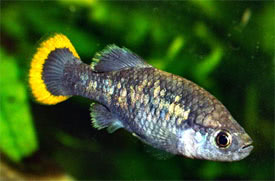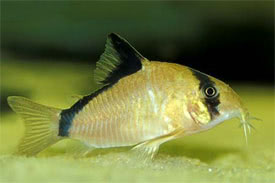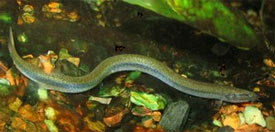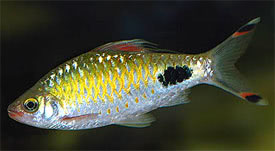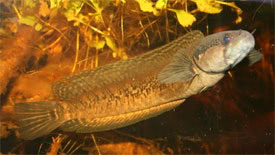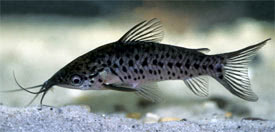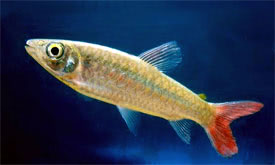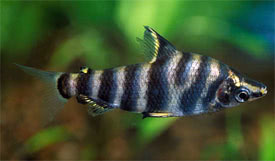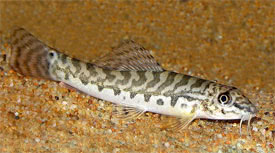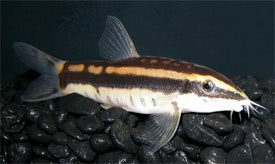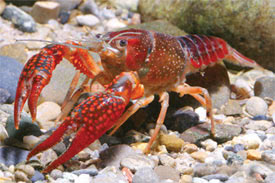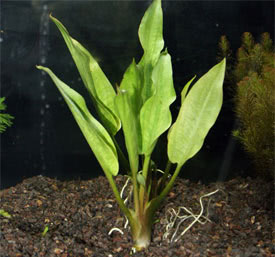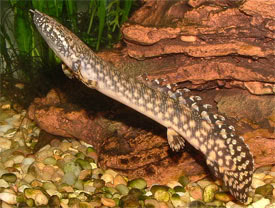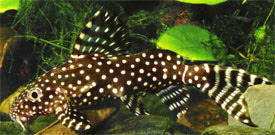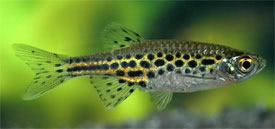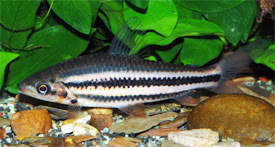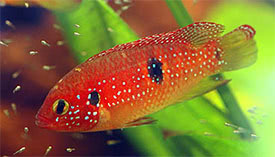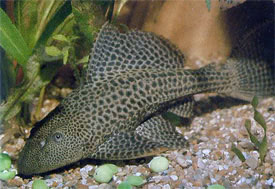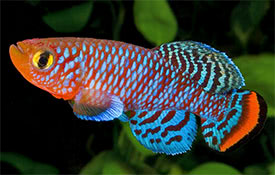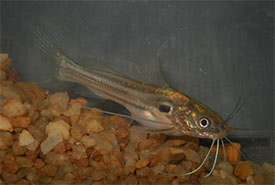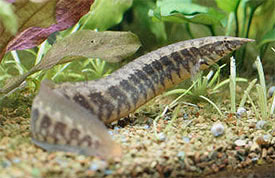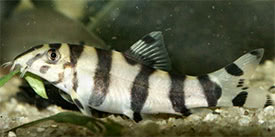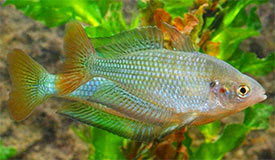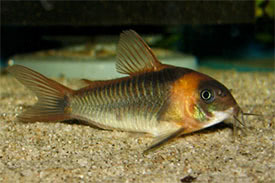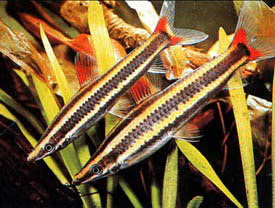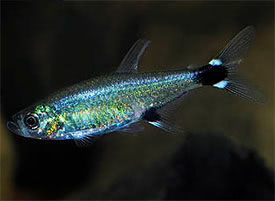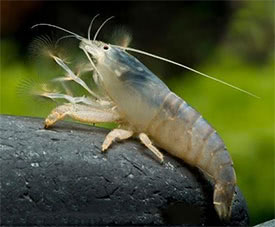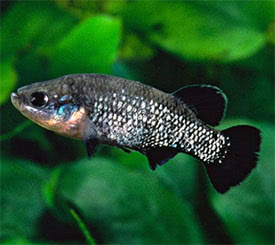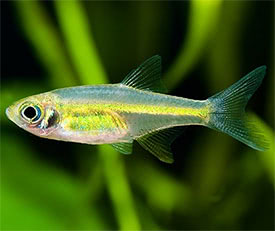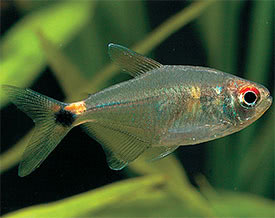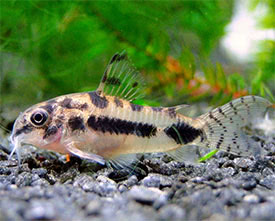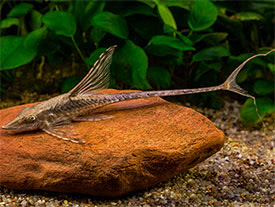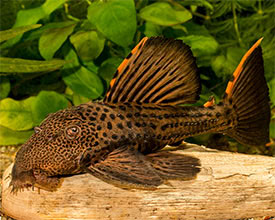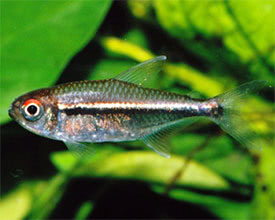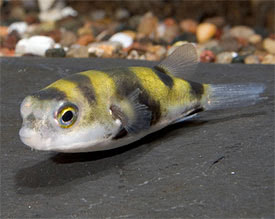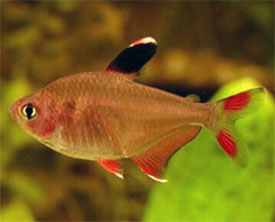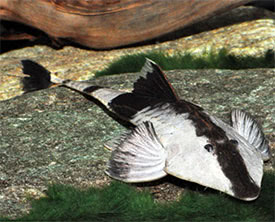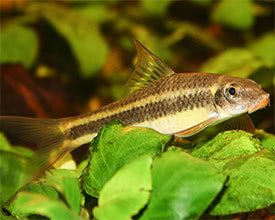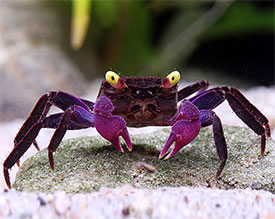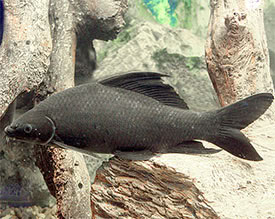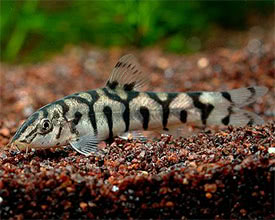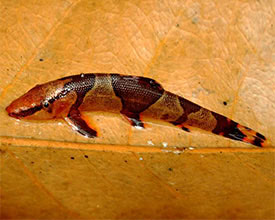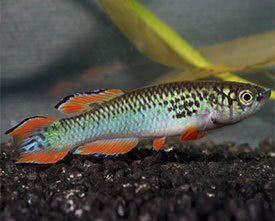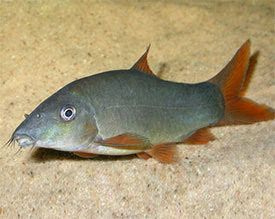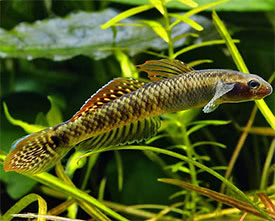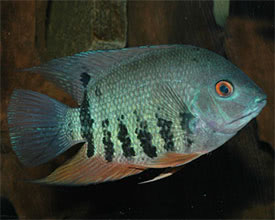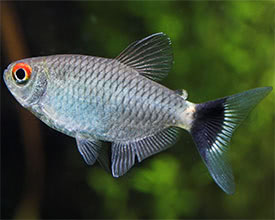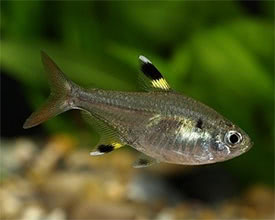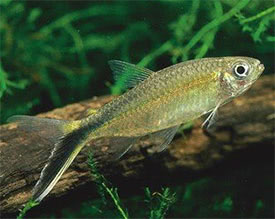Pseudosphromenus cupanus - Spiketail Paradisefish
 Magyarul / Hungarian
Magyarul / Hungarian

 Magyarul / Hungarian
Magyarul / Hungarian

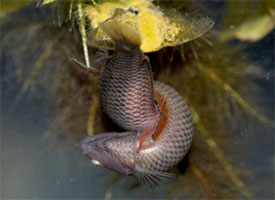

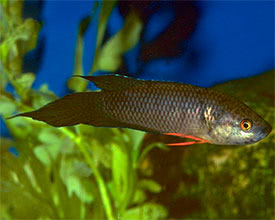

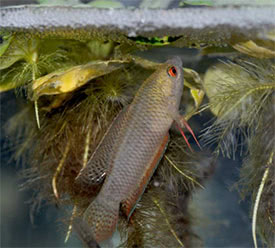
- Scientific name: Pseudosphromenus cupanus
- Synonyms: Polyacanthus cupanus (Cuvier, 1831), Macropodus cupanus (Cuvier, 1831), Psedosphronemus cupanus (Cuvier, 1831)
- Common name: Spiketail Paradisefish
- Group: Labyrinth fish
- Distribution: Asia; Southeast India, Sri Lanka.
- Size: 6-6.5 cm
- Biotope: Found in slow-flowing rivers, shallow lakes, rice paddies, and swamps with dense submerged vegetation.
- Social behavior: A peaceful fish, but not recommended for a community aquarium, because of its small size and shy nature, it is best to keep them in a species tank. Can be kept in pairs or in a small group.
- Diet: Omnivorous; feeding mostly on insects and other invertebrate larvaes in nature. It will accept small live and frozen foods in aquarium. Dried foods may be pecked, but are not consumed in sufficient quantities.
- Breeding: Hard
- Tank: Minimum 60 litres
- Population: 1 pair for 60 litres
- Decoration: Does well in a densely planted aquarium with floating plants that dim the lighting. Build many hiding places from roots and branches, or use clay plant pots or half-coconut shells to create shelter. Dried leaf litter on the substrate is also useful and resemble to their natural habitat.
- Temperature: 20-28 °C
- pH: 6.0-7.5
- Hardness: 2.0-25.0 dGH
- Lifespan: 5-8 years
Description: Pseudosphromenus cupanus has a coppery-brown body, with bluish edging on the fins, especially on the caudal fin. Although the extension forming a characteristic spike on the caudal fin tends to be a feature of males, this characteristic is also shared with some females. Males have bright re diris, and similar coloration on the pectoral and anal fins. It can be told apart from its congener the Brown Spike-Tailed Paradise Fish (Pseudosphromenus dayi) by lacking the two dark, irregular lateral stripes on the body, and a shorter caudal-fin in males. With its labyrinth organ Spiketail Paradisefish can breathe atmospheric air, and can survive in oxygen-poor muddy waters.
Males develop extended dorsal, anal and caudal fins. Spawning males display more intense fin coloration and have a pale body, while females darken in color. Other option to identify the sexes by placing a strong light behind the fish; in females the ovary is thus visible as a posterior, laterally-orientated extension of the internal organs which is lacking in males.
Spiketail Paradisefish is a secretive bubble nest builder, in nature the male construct nests under an overhang or in a cavity, or if there are no surface vegetation, underside of broad leaved plants or roots may be chosen as the nesting site. In the aquarium upturned flowerpots, half-coconut shells, or clay pipes can be used as spawning sites. The aquarium must have a tight fit cover (some breeders use clingfilm), and do not fill it with water to the top, as the fry require access to a layer of humid air for the proper development of their labyrinth organ. The male usually builds a small bubble nest. They spawn under the bubble nest: the male embraces the female's body with his own body while the eggs and sperm are released, and both fish collect and transfer them to his nest. The number of the eggs can be a few hundred. After the spawning the male will protect and look after of the eggs. Male has also been observed building more than one bubble nest and moves the eggs from one nest to the other. The eggs hatch in 24-48 hours and become free-swimming after another 2-3 days. Once the fry become free-swimming they can be fed with newly hatched brine shrimp. The fry may be consumed by other fish in the aquarium, including their mother, so are best separated and grown on elsewhere.
Sources:
http://www.fishbase.org/summary/11228
http://www.seriouslyfish.com/species/pseudosphromenus-cupanus/
http://aquaworld.netfirms.com/Labyrinthfish/Pseudosphromenus/Pseudosphromenus_cupanus.htm
http://www.alliedacademies.org/articles/breeding-behaviour-of-spiketail-paradise-fishpseudosphromenus-cupanus-cuvier-1831.pdf
David Alderton - Bettas and Gouramis
https://www.aqualog.de/blog/schwarze-spitzschwanzmakropoden/
http://www.fishbase.org/summary/11228
http://www.seriouslyfish.com/species/pseudosphromenus-cupanus/
http://aquaworld.netfirms.com/Labyrinthfish/Pseudosphromenus/Pseudosphromenus_cupanus.htm
http://www.alliedacademies.org/articles/breeding-behaviour-of-spiketail-paradise-fishpseudosphromenus-cupanus-cuvier-1831.pdf
David Alderton - Bettas and Gouramis
https://www.aqualog.de/blog/schwarze-spitzschwanzmakropoden/
Hasonló vízparamétereket igénylő fajok





